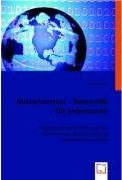 My thesis has been published as a Book and you can purchase it from Amazon by clicking below (affiliate link).
My thesis has been published as a Book and you can purchase it from Amazon by clicking below (affiliate link).
Das semantische Web und wie Microformats die Entwicklung vorantreiben werden
The book is written in german and was the last assignment to finish my university as “Diplomingenieur (FH) für technisch-wissenschaftliche Berufe” on the university of applied sciences in Burgenland, Austria.

English abstract
The World Wide Web has gained a high level of spreading in various areas of life throughout the last years. Although it’s well scaling technology, there are a few weak points which could be improved. Another number of ideas just emerged with the enormous growth of the current world wide web. All those points led to concepts on how to enhance and change the web as it is known today.
One of the earliest ideas for this web-revolution originates from the Web’s inventor and current director of the World Wide Web Consortium, Tim Berners-Lee. He calls it the “Semantic Web”. This new web could completely replace today’s World Wide Web. To accomplish this, it would be required to rewrite all the publications on the web with a new markup language, based on XML. Although the concept of the “Semantic Web” is well developed and could theoretically solve all of the problems that might be coming up in the future, it’s only spreading very slow.
One new movement, that also aims at adding machine readable definitions to data on the WWW, are Microformats. Those small semantic additions can be placed within standard XHTML, thus removing the requirement of rewriting the world wide web. That is why they are often called the “lowercase semantic web” or the “semantic web from below”.
Microformats let people use their data freely and import them directly from the web into desktop applications. The ease of use und quick pace of implementation are two of the main points why Microformats are gaining popularity so quickly and why we can hope that Microformats will lead us to a richer, more semantic web in a short period of time.
This thesis gives an introduction to Microformats, along with showing the historical track that led to the invention of Microformats. It depicts technical details as well as enumerating current and upcoming Microformats implementations, thus leading to an estimation of the potential of this fast-growing technology.
Kurzfassung Deutsch
Das World Wide Web hat in den letzten Jahren in allen Lebensbereichen eine hohe Bedeutung erreicht. Trotz des hervorragend skalierenden Designs der Technologie des WWW, hat diese einige Schwachpunkte, die man gerne ausmerzen würde. Darüber hinaus sind einige neue Ideen zur Verwendung und Vernetzung von Daten erst durch die neuen Möglichkeiten eines Netzes dieser Ausdehnung entstanden. Diese Punkte führen dazu dass Konzepte entwickelt wurden, um das WWW zu verbessern. Eine der frühesten Ideen zur Revolutionierung des WWW, stammt von dessen Erfinder, Tim Berners-Lee. Der heutige Direktor des World Wide Web Consortium nennt es das “Semantic Web”. Dieses neue Web soll, auf lange Sicht, das heutige WWW komplett ersetzen. Dafür ist es notwendig, sämtliche Publikationen, die heute HTML verwenden, mittels einer neuen XML Definitionssprache auszuzeichen. Das Konzept des Semantic Web ist sehr gut durchdacht und könnte theoretisch alle auftretenden Probleme, die in Zukunft daran gestellt werden, lösen, setzt sich jedoch nur sehr schleppend durch.
Eine neue Entwicklung, die in eine Ähnliche Richtung zielt, nämlich die Durchsetzung der Daten im WWW mit maschinenlesbaren Bedeutungen, jedoch ohne die Notwendigkeit, (X)HTML zu ersetzen, sind die so genannten Microformats. Diese kleinen semantischen Erweiterungen gliedern sich komplett in standardkonformes (X)HTML ein und erfordern so keine neuen Datenformate. Aus diesem Grund werden sie auch oft das “lowercase semantic web” oder “das semantische Web von unten” genannt . Microformats ermöglichen frei mit Daten umzugehen und sie direkt vom Web in Desktop-Applikationen zu importieren. Der einfache Einsatz und die schnelle Implementierbarkeit, sind Hauptgründe warum sich Microformats so rasant durchsetzen und die Überführung des bisherigen WWW in ein semantisches Netz beschleunigen.
In dieser Arbeit wird eine Einführung in die Microformats-Technologie gegeben, ihre historischer Entwicklung beleuchtet, anhand der Aufzählung vorhandener und absehbarer Implementierungen das Potential der Microformats-Technologie abgeschätzt.